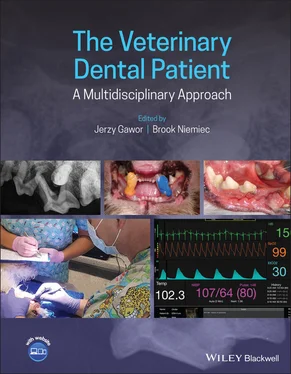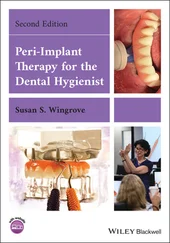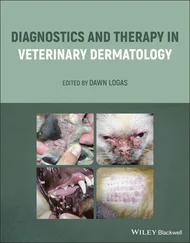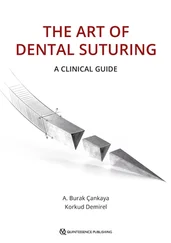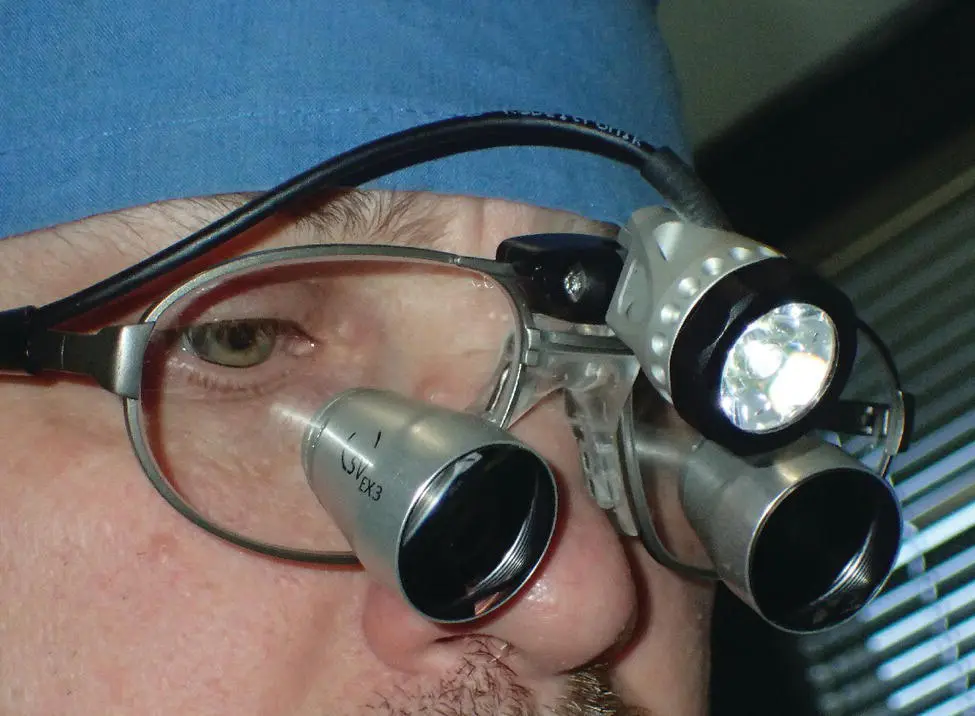
Figure 1.26 Magnification helps greatly with dental procedures.
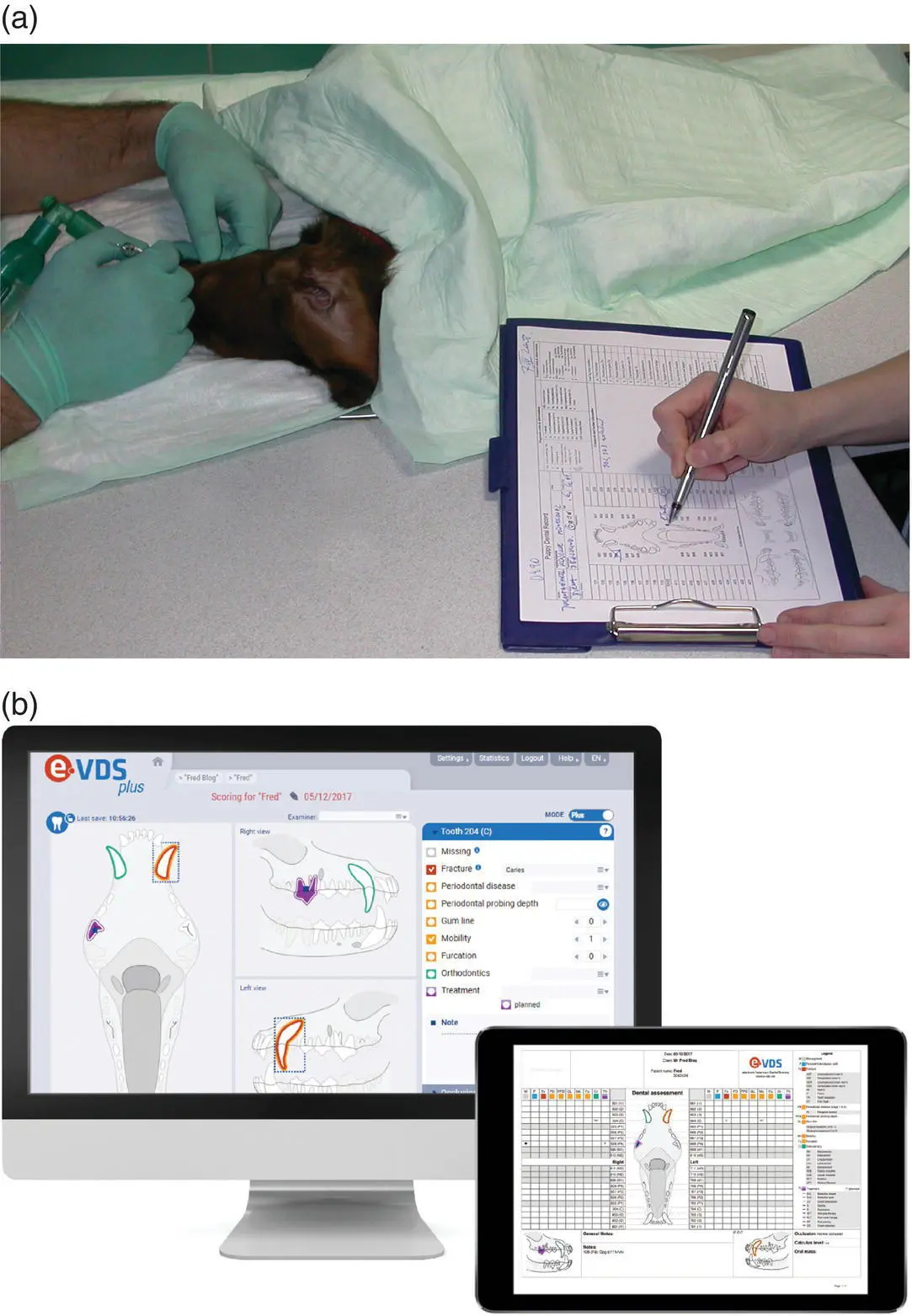
Figure 1.27 Charting: filling in (a) a paper dental chart and (b) an electronic veterinary dental scoring system.
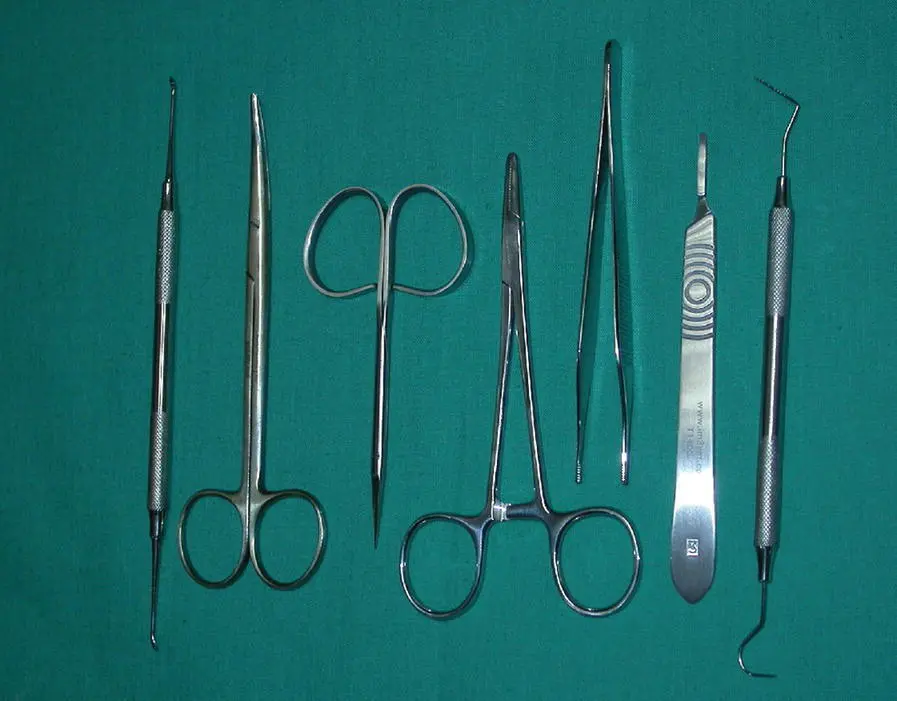
Figure 1.28 The oral surgical general kit includes, from left: periosteal elevator, suture scissors, tissue scissors, needle holder tissue forceps, blade holder, and periodontal probe.

Figure 1.29 Extraction kit: luxators (left) and elevators (right), as well as extraction forceps.
Source: Emilia Klim.
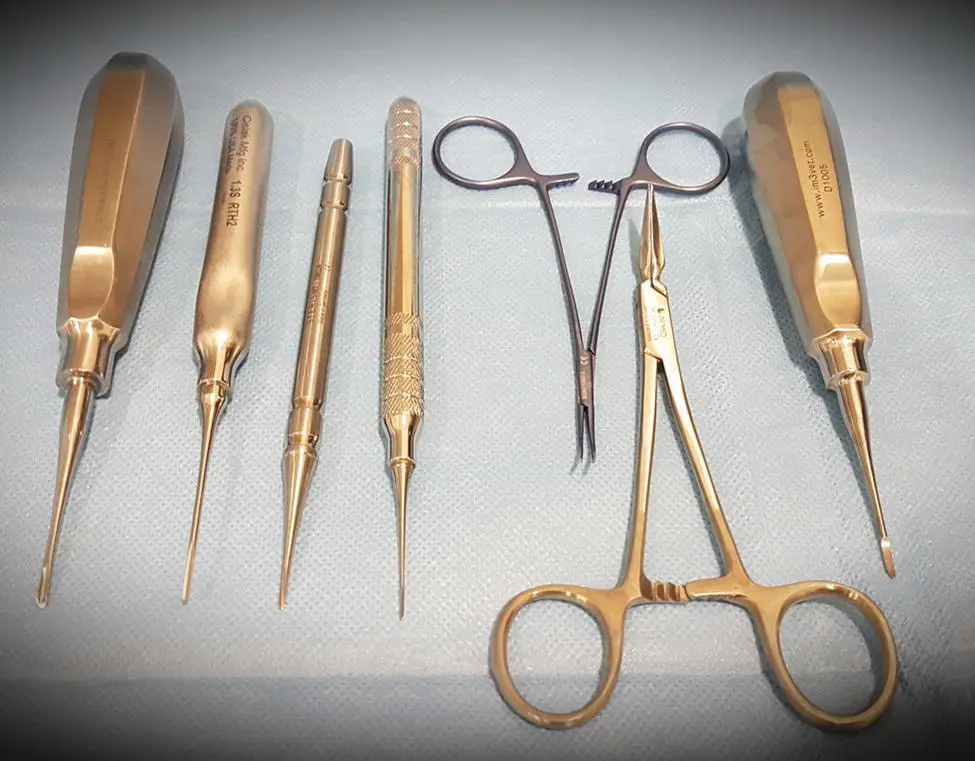
Figure 1.30 Rescue kit ‐ From left: four superslim luxators and elevators, mosquito titanium forceps, root tip forceps, and root tip elevator.

Figure 1.31 Selection of burs for extraction.
Source: Emilia Klim.

Figure 1.32 Periodontal kit. From bottom: mirror, three curettes, periodontal probe, and two scalers.
A necessary addition to this kit is an extraction package that contains an assortment of luxators and elevators, as well as extraction forceps ( Figure 1.29), and possibly a separate set of instruments dedicated to solving complications, such as root‐tip forceps and root‐tip elevators ( Figure 1.30).
There is also an option for a combination luxator and elevator, called an extractor. In this author's hands, it does not fulfill expectations, but it may be worth trying, particularly under the supervision of someone familiar with its use.
An additional element of an extraction kit is a selection of burs, typically used during surgical extractions. The most common varieties of burs are round, pear‐shaped, and fissure, in both standard and surgical lengths ( Figure 1.31).
A manual scaler (either Jacquette or sickle) is a good addition for removing supragingival deposits. For subgingival deposits (plaque and calculus) and granulation tissue debridement, curettes are utilized. There are two major types of curettes: universal and area‐specific. Universal curettes have a blade with two cutting edges and can be adapted to all regions in the mouth and dentition ( Figure 1.32); however, there are smaller and larger versions enabling the working to reach every small area of interest. Area‐specific curettes are designed differently, with only one cutting edge and 70° angulation of the face ( Figure 1.33). The most popular set is the Gracey series.
In all kinds and variations of surgical instruments, the key to successful use is good working conditions and correct application, which includes: handling, adequate surface use, and proper movement of working tip and the hand.
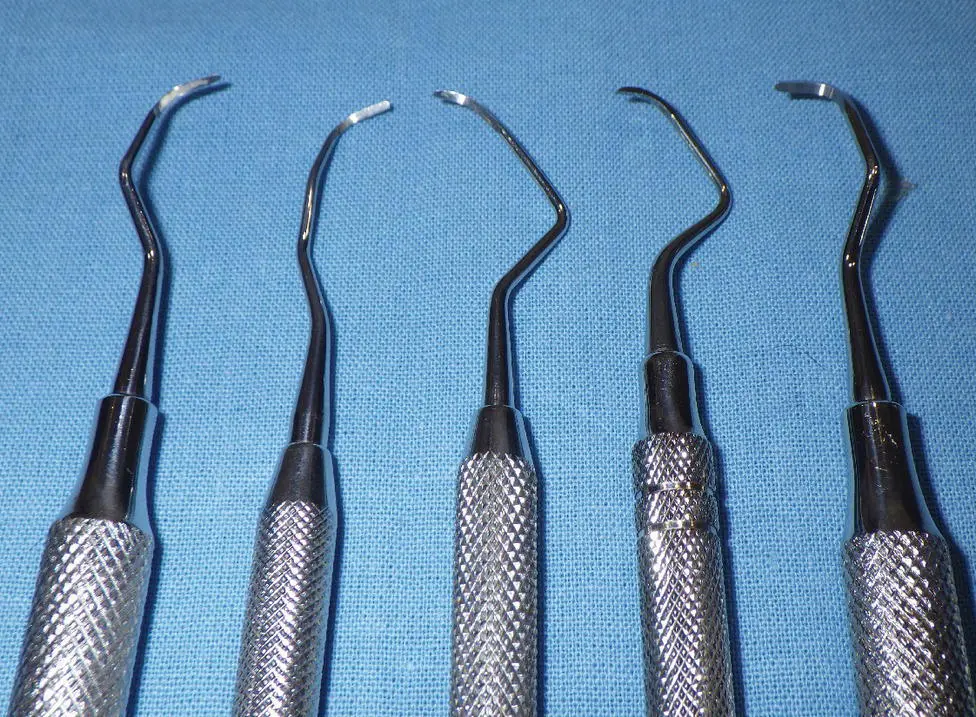
Figure 1.33 Area‐specific curettes.
1.10.4 Instrument Care and Sharpening
See Appendix B.
1.10.5 Materials Required
Generally, absorbable monofilament suture materials are recommended for oral surgery, size 5/0 for cats and 4/0 for dogs. These materials result in less irritation of local soft tissues and fewer cases of infection. Polyglecapron 25 is the most popular material, and due to its relatively long time of absorption, it is a good option even in wounds where slow healing may be anticipated.
Suture needles for oral surgery must be the swaged‐on type. Needle curvature is either 3/8 or 1/2, with the latter more indicated in the caudal part of the oral cavity. A reverse‐cutting needle is best for suturing gingiva and mucosa, but for delicate mucosa, a taper point may be optimal. In the author's experience, colored sutures are easier to handle than transparent ones; the most commonly available color is blue.
Polishing paste is routinely used for final cleaning and smoothing of the rough crown surface after descaling. Flour of pumice is a very popular product for this. It is often stored in large containers, but disposable mini containers are also available. In most cases, fine‐grit paste is preferred. Some polishing pastes contain fluoride and some are colored so as to be more easily identifiable following the final flush of the mouth.
Chlorhexidine (CHX) solution is used to flush the mouth before descaling and to provide antimicrobial action if potential infection is significant ( Figure 1.34). Premade concentrated CHX bottles can be added to water tanks in dental units. It is important to follow manufacturer instructions and apply the solution only if it is accepted by your particular model and type of handpiece.
Plaque‐disclosing solutions are helpful in identifying plaque coverage on tooth crowns. They can be presented to pet owners when discussing oral hygiene methods or applied as a quality control after scaling of teeth to reveal remnants of dental deposits ( Figure 1.35).
Pharyngeal packs can be made of gauze or sponge and are inserted into the pharynx around the endotracheal tubes or esophageal probe to protect the respiratory tract against aspiration of water and other contamination that occurs during professional dental cleaning. They must not be too tight as this can compromise lymphatic or blood‐vessel circulation and cause edema. To avoid leaving them in after the procedure, it is helpful to have a thread left hanging outside the mouth that can be used to pull them out ( Figure 1.36).
Personal protective equipment is described in detail in Chapter 7.
Oral hygienic products are described in Chapter 5.
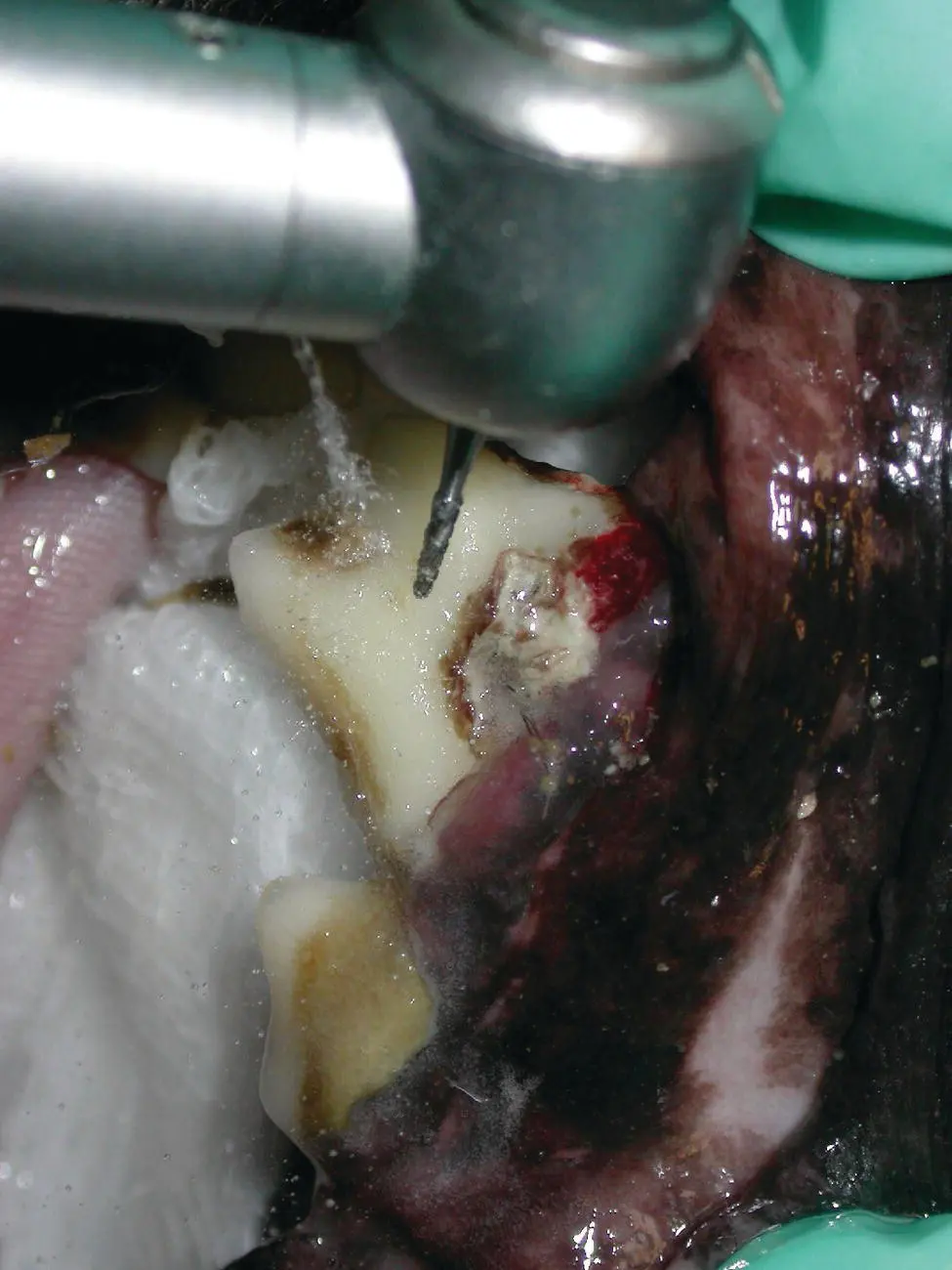
Figure 1.34 Use of CHX solution during extraction of a badly infected mouth.
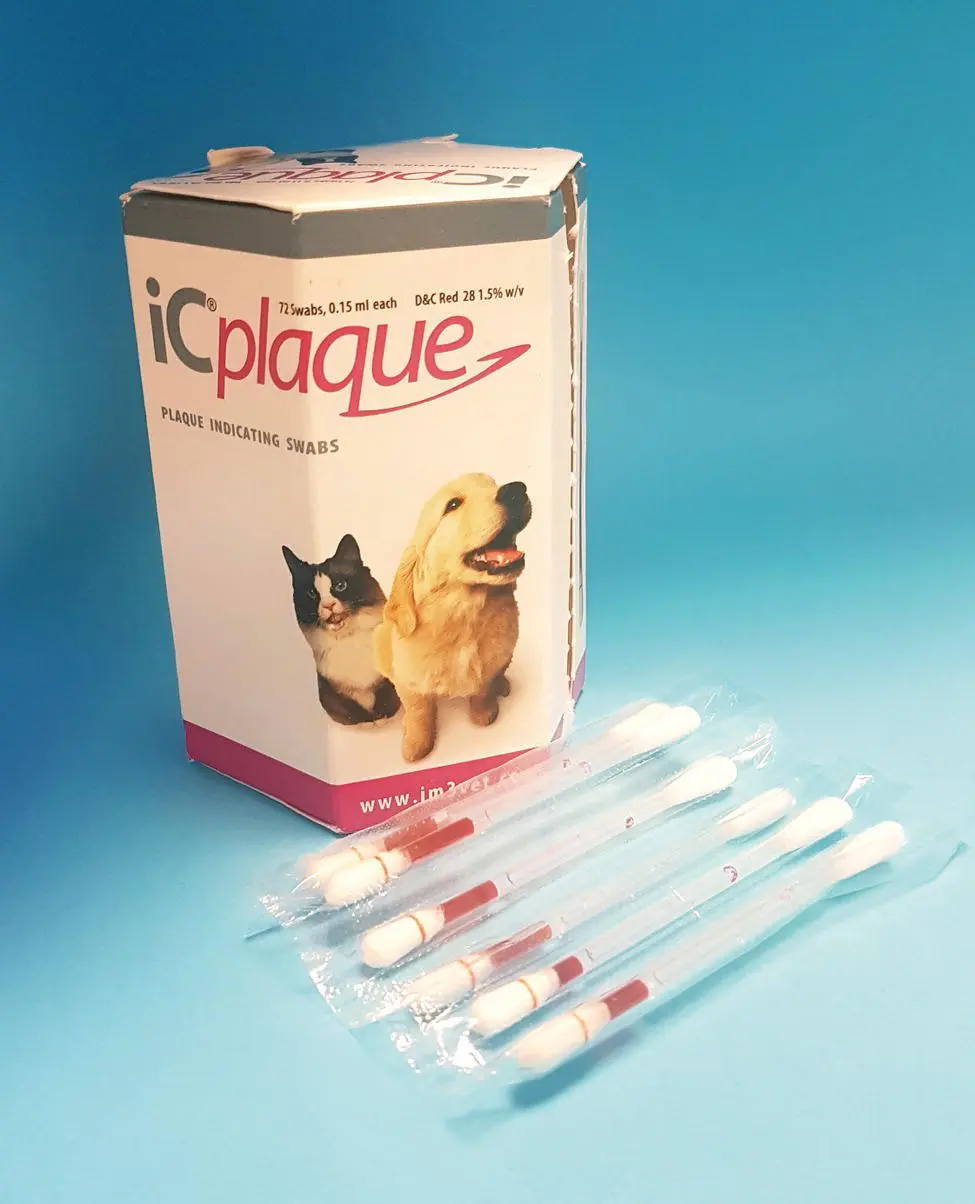
Figure 1.35 Plaque‐disclosing solution.
Source: Emilia Klim.
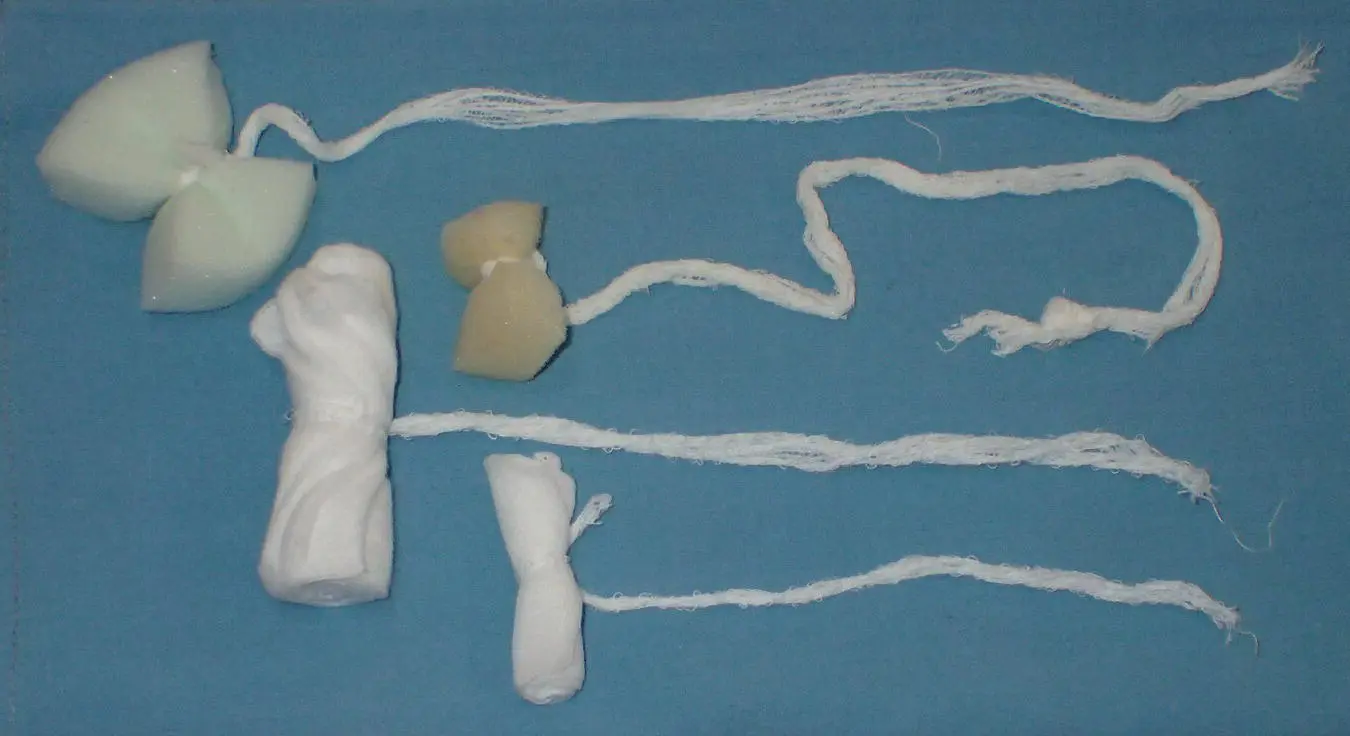
Figure 1.36 Disposable custom‐made pharyngeal packs made of gauze or sponge.
Читать дальше
